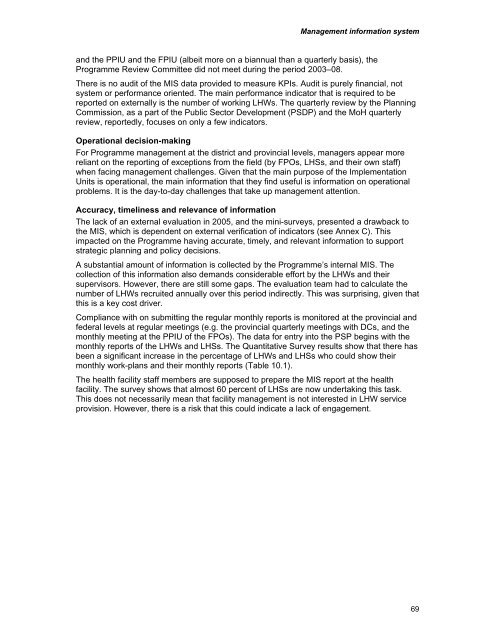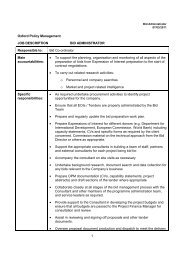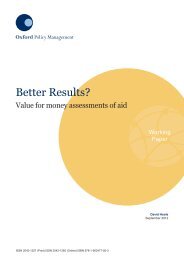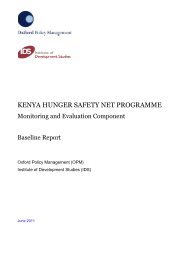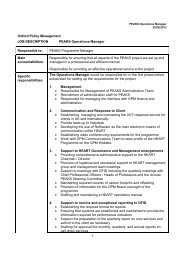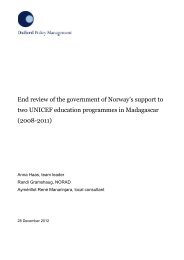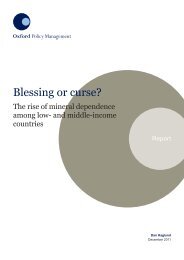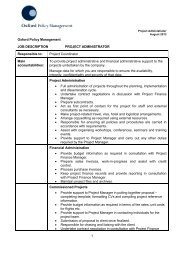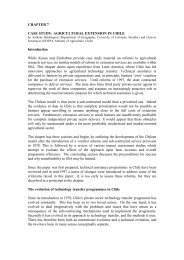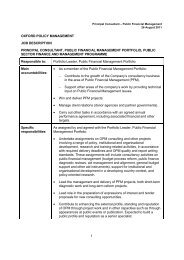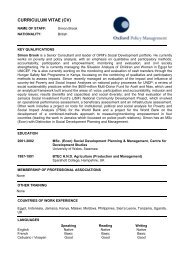<strong>LHW</strong>P – <strong>Systems</strong> <strong>Review</strong>The Strategic Plan outlined new or improved MIS tools that were to be developed. Theseincluded new instruments, such as: mini-surveys for operation at the district level; a fleetmanagement database; a procurement management database; and a review of thepersonnel database; further development of the MIS administrative records; and a review ofthe <strong>LHW</strong>/LHS reporting system, which would take into account management capabilities atusing the information collected.In addition to new MIS instruments, the PC-1 (p. 51) referred to the need for an efficientcomputerised system that would support decision-making, improving accuracy, andtimeliness of data. All PIUs were to be equipped with computers and printers for propercompilation and analysis of reports on a monthly, quarterly, and annual basis. All PIUs wereto be linked through WAN or email for timely and efficient transfer of data.10.6 System performance10.6.1 Performance indicatorsMIS reports on KPIsThe analysis of whether the MIS gathers information to measure the KPIs is provided inAnnex C.Information from the MIS is used to inform strategic and management decisions<strong>Management</strong> information that can be used for decision-making is provided throughsummaries of the PSP to show results against some of the Programme’s main targets (e.g.the number of <strong>LHW</strong>s employed, the ratio of LHS to <strong>LHW</strong>s, the number of vehicles, andpopulation coverage. However, this information does not provide for measures of a broadrange of KPIs. 83Information for strategic decision-making and policy development is primarily generated byexternal evaluations. There is a clear progression from the findings of the 3rd Evaluation topolicies in the Strategic Plan and budgeted activities in the PC-1.However, a mid-term evaluation planned for 2005 did not take place, and the planned minisurveysto be derived from the 3rd Evaluation were not developed. In the absence of thisinformation, the Programme had to rely on the results from the evaluation conducted in 2000and the information collected by its internal management information system.The Programme did not implement Phase 2: Development of a Sustainable Programme(outlined in the PC-1) that had been planned for July 2005. If it had done so, then theremight have been more demand for the evaluation undertaken in 2005 in order to informoptions.There also appears to be a lack of demand from the Ministry of Health and the PlanningCommission as a part of a performance monitoring process. Annual planning and reviewwould provide an obvious need for high quality data. The Programme produced a NationalPlan of Action in 2003, 2004, and 2005 but failed to do so after that date.While annual reviews are published, they do not place a high demand on the MIS. 84 WhileProvincial <strong>Review</strong> meetings have been held between the PPIU and District Coordinators,83The MIS is described in detail in the ‘Module on Use of Information at District Level: <strong>LHW</strong> MIS’. This manual guides the DPIUstaff through the analysis and use of data collected from the <strong>LHW</strong>s and the LHSs. It was produced in 2005, and trainingcourses were held throughout the Programme. In the introduction, Dr Zahid Larik (the then National Coordinator) said:‘Providing adequate and accurate information for the management of health care services is still a big challenge for the MISsections’ of the Implementation Units, ‘[w]hile some data are unreliable, most are often not processed or analysed formanagement use84The Programme does produce annual Cash Plans/Work Plans, for the Ministry of Finance; however, these do not requirereporting against the range of KPIs.68
<strong>Management</strong> information systemand the PPIU and the FPIU (albeit more on a biannual than a quarterly basis), theProgramme <strong>Review</strong> Committee did not meet during the period 2003–08.There is no audit of the MIS data provided to measure KPIs. Audit is purely financial, notsystem or performance oriented. The main performance indicator that is required to bereported on externally is the number of working <strong>LHW</strong>s. The quarterly review by the PlanningCommission, as a part of the Public Sector Development (PSDP) and the MoH quarterlyreview, reportedly, focuses on only a few indicators.Operational decision-makingFor Programme management at the district and provincial levels, managers appear morereliant on the reporting of exceptions from the field (by FPOs, LHSs, and their own staff)when facing management challenges. Given that the main purpose of the ImplementationUnits is operational, the main information that they find useful is information on operationalproblems. It is the day-to-day challenges that take up management attention.Accuracy, timeliness and relevance of informationThe lack of an external evaluation in 2005, and the mini-surveys, presented a drawback tothe MIS, which is dependent on external verification of indicators (see Annex C). Thisimpacted on the Programme having accurate, timely, and relevant information to supportstrategic planning and policy decisions.A substantial amount of information is collected by the Programme’s internal MIS. Thecollection of this information also demands considerable effort by the <strong>LHW</strong>s and theirsupervisors. However, there are still some gaps. The evaluation team had to calculate thenumber of <strong>LHW</strong>s recruited annually over this period indirectly. This was surprising, given thatthis is a key cost driver.Compliance with on submitting the regular monthly reports is monitored at the provincial andfederal levels at regular meetings (e.g. the provincial quarterly meetings with DCs, and themonthly meeting at the PPIU of the FPOs). The data for entry into the PSP begins with themonthly reports of the <strong>LHW</strong>s and LHSs. The Quantitative Survey results show that there hasbeen a significant increase in the percentage of <strong>LHW</strong>s and LHSs who could show theirmonthly work-plans and their monthly reports (Table 10.1).The health facility staff members are supposed to prepare the MIS report at the healthfacility. The survey shows that almost 60 percent of LHSs are now undertaking this task.This does not necessarily mean that facility management is not interested in <strong>LHW</strong> serviceprovision. However, there is a risk that this could indicate a lack of engagement.69


